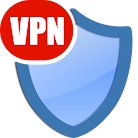Kaseya incident

We're all so confident in putting all of our data in hands of trusted companies, many just do it because it's there, it's cheap, the suppliers are trustworthy, just put everything in the cloud. It should be safe because most of the world is using it and the company is from the USA. Well, " That's not entirely accurate " as someone in " Independence Day " said. When you run your own data on-premise it implies that you are THE ONE responsible for the security, how it works, when the patches will roll out, who is responsible, everything. The major advantage is that ransomware attackers need to be more specific if they really want to attack just YOUR company. If they attack your dearly ?aaS then they might get access to all of your sensitive data, internal network, everything. So easy and beautiful, knock off one and you have thousands of victims to harvest bitcoins from. It's like " Ender's Game " (read the book, please) or "...
